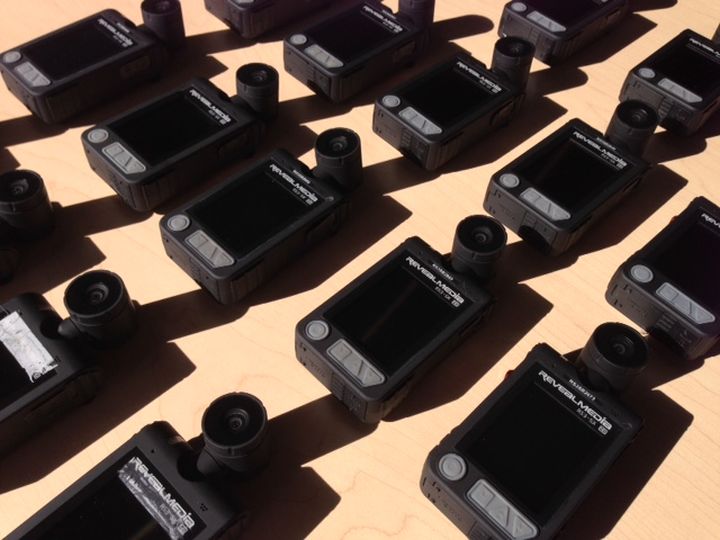WATCH ABOVE: Some Edmonton police officers will now be wearing video cameras. A three-year pilot project and study has concluded the cameras have potential, but they will not be given to all officers. Fletcher Kent reports.

EDMONTON – The Edmonton Police Service is moving ahead with a body-worn video program following a pilot project over the past three years.
Police say the program will be gradually implemented over the next five years. Cameras will not be worn by all officers, just those involved in high-risk interactions with public, where officers are on scene of a crime being committed, and the evidence being captured on video will provide the greatest value to the courts.
“The value of collection that evidence when they find individuals committing an offence will be hugely beneficial, we believe,” said Deputy Chief Danielle Campbell.
Officers with the Impaired Driving Unit and Strategic Traffic Apprehension Teams, for example, will wear cameras.
“Body-worn video has value in providing evidence in criminal investigations, but as we have found through our study, there are significant challenges that do not make it feasible to implement BWV across our entire police service,” said Campbell.
The cost of the video equipment itself is relatively inexpensive. However, Campbell says there are significant costs associated with the reporting, storage and review of the video.
She says taking officers off the streets to review video will mean fewer officers responding to service calls and a significant increase in operating expenses. But as the technology continues to evolve, Campbell anticipates the costs will decrease.
- Toronto Pearson gold heist: Ontario man arrested at airport after arriving from India
- Man charged in surfer deaths told girlfriend he killed ‘3 gringos,’ court hears
- ‘I believe they’re looking for me’: Man arrested after triple stabbing in Mississauga, Ont.
- Drone used to smuggle $250,000 worth of contraband into N.B. prison, police say
“The costs are in the storage of the video and in the time needed by officers to search and review each segment of video twice; first during the initial reporting of the incident, and second, while preparing to testify and complying with disclosure and Freedom of Information requirements,” said Campbell.
READ MORE: Body-worn cameras can reduce use-of-force, complaints to police: study
Police say privacy was a major consideration throughout the three-year pilot. The EPS research team consulted with the Alberta Privacy Commissioner, who provided recommendations for police to create policies and procedures that aligned with the Office of the Privacy Commission of Canada.
“This body-worn video study is the most comprehensive in Canada to date and has set a benchmark in the breadth and depth of the evaluation undertaken,” said Dr. Mary Stratton, body worn video project coordinator.
Edmonton police say the study shows the devices have not affected its number of use of force investigations. The cameras also haven’t changed the typical number of complaints the force gets against police.
The study says the cameras were useful in investigations, but also caused officers to hesitate about using appropriate force against suspects.
The study says cameras were just as likely to escalate a person’s behaviour than to subdue it.
The pilot project ran from October 2011 to December 2014, with 56 cameras worn by officers in the downtown division, West Edmonton Mall and Whyte Avenue beats, the Impaired Driving Unit, and the Disaster and Emergency Operations Unit.
Police will present a business case to the Edmonton Police Commission in September and with its support, a service package for funding will be submitted to City Council in the fall. If council approves the funding, police hope to begin implementing the plan in early 2016.











Comments